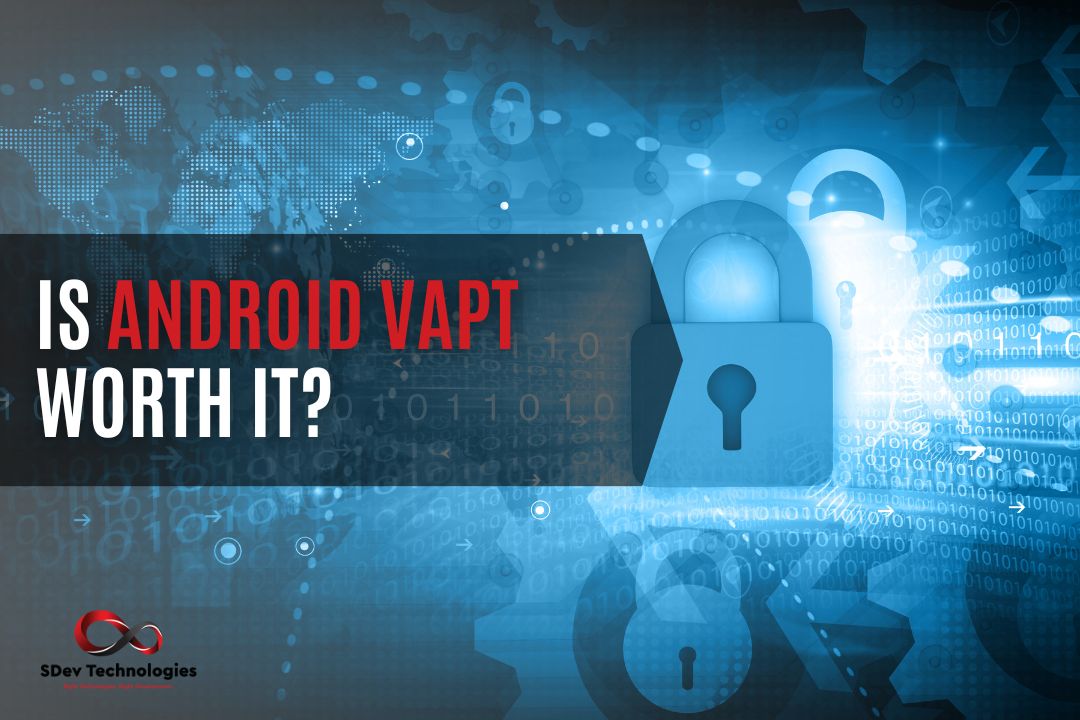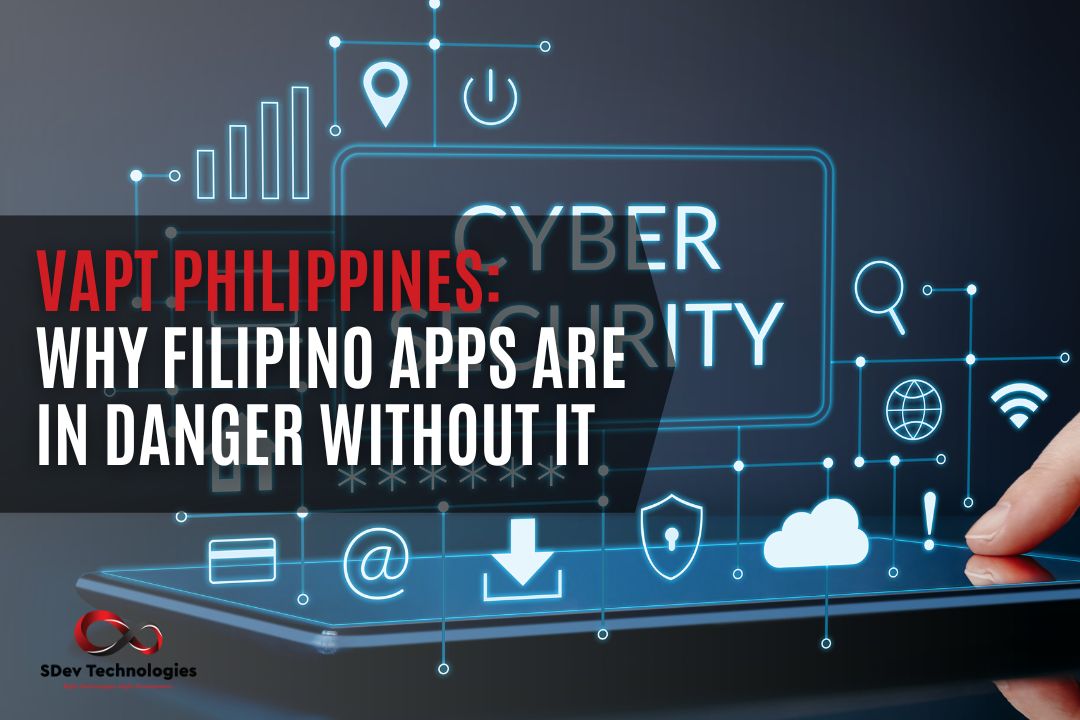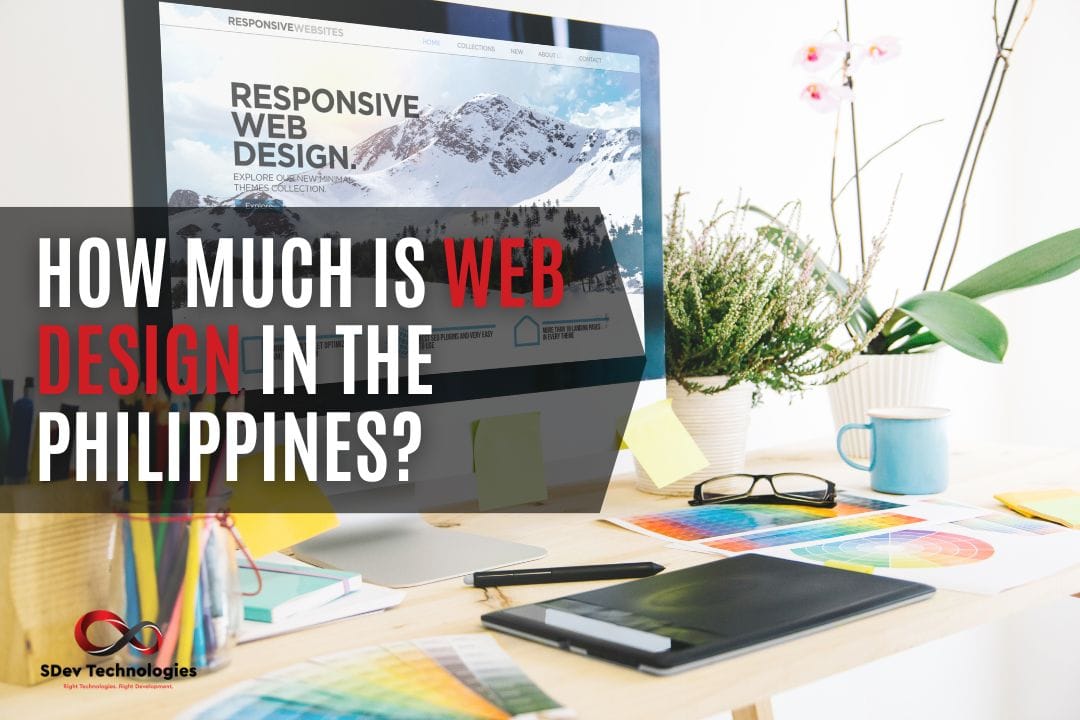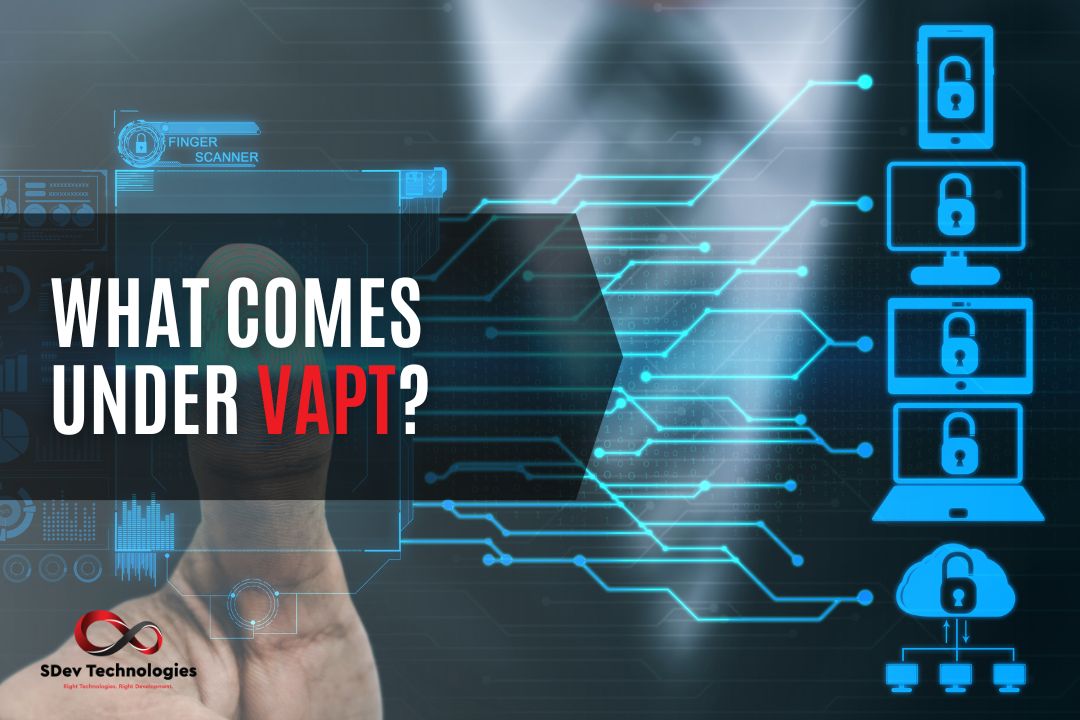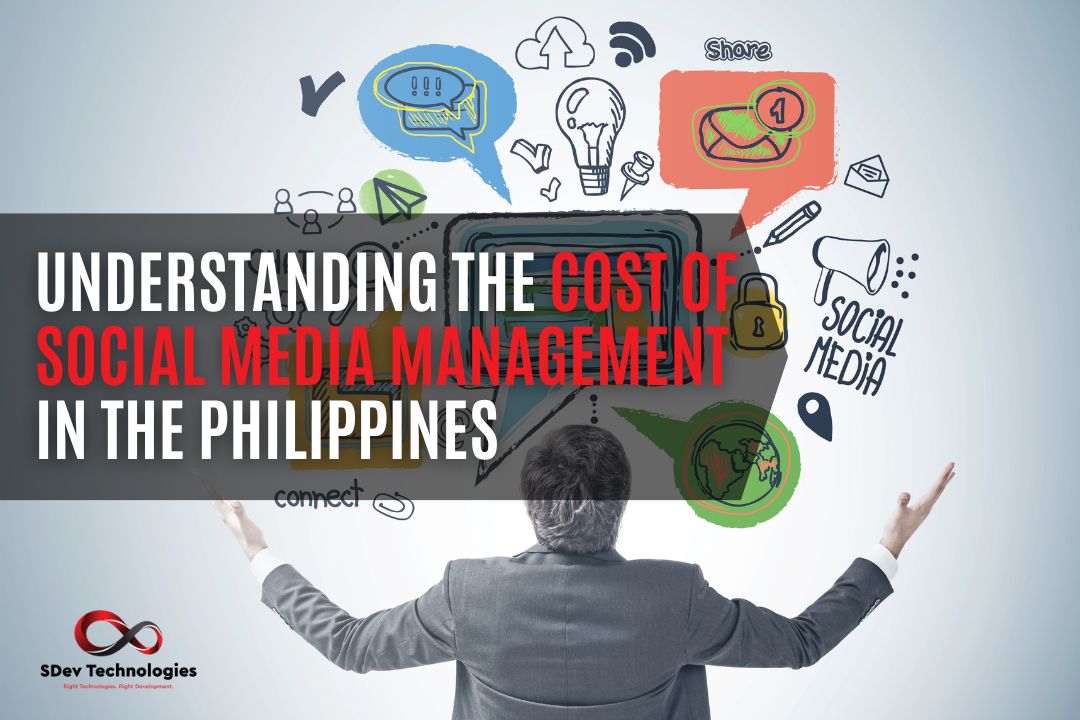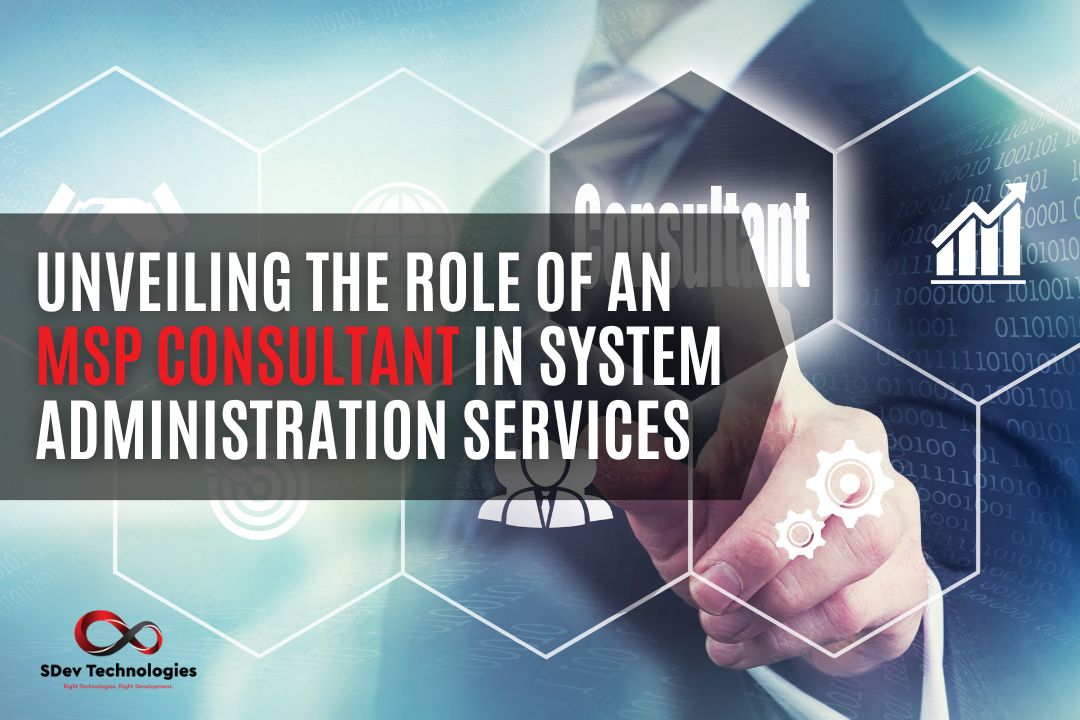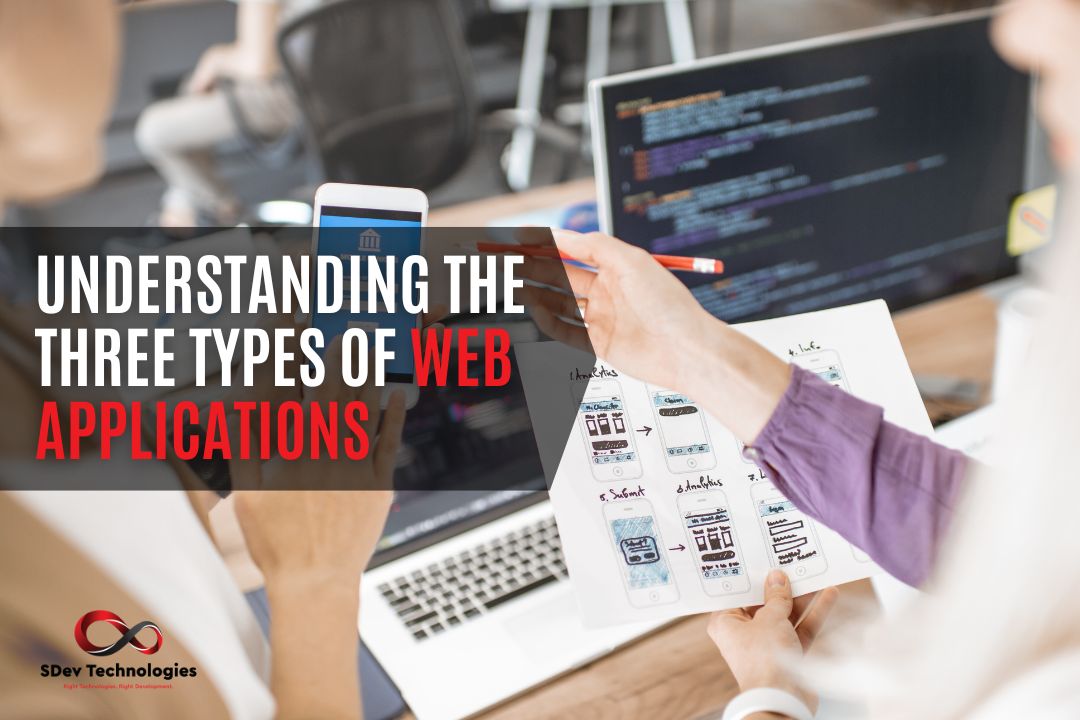Vulnerability assessment and penetration testing (VAPT) is an important component of Android app development, but it’s usually more an option than a necessity. VAPT can do wonders for your app. It can help keep hackers at bay, mitigate the effects of data leakage due to misbehaving apps, and prevent breaches in case the device gets stolen or lost. More importantly, it can help protect your company’s reputation and inspire confidence in your app’s target audience. However, Android VAPT does cost money. The more complex your app is, the more you may have to pay to get it thoroughly tested. So, is it worth it? A resounding yes! No matter how big your bill gets, VAPT is a reasonable expense in the grand scheme of things. Don’t believe us? Here are some facts: Android Is More Vulnerable to Mobile Malware iOS isn’t immune to cyber attacks, but Android is way more susceptible to threats due to its open nature. Unlike its Apple counterpart, Google’s operating system allows app downloads from third-party marketplaces. In short, Android apps are more exposed to dubious programs. Historically, Android tends to be more buggy than iOS. The former has seen about three times the amount of vulnerabilities in one year than the latter has recorded in five.One vulnerability is all advanced smartphone malware needs to exploit your Android app and compromise its user’s device. But with VAPT, you can discover your app’s weaknesses before hackers do. Getting your Android app regularly professionally audited is key to outsmarting cyber criminals. In a constantly changing cybersecurity landscape, you must have a 360-degree view of your security gaps to catch blind spots and remain compliant with international standards. Potential Losses due to Cybercrime Are Eye-Watering Cyber criminals are projected to cost the world a staggering $10 trillion every year by 2025. That makes it more lucrative than the trade of all major illicit drugs worldwide. If you’re not happy about having to budget for Android VAPT on top of your other mobile app development expenses, you may still lose money even if you don’t do it. The only difference is that you could be making criminals rich instead of spending your resources to stop them from stealing from you and your users. Recovery Isn’t Cheap One survey revealed that small business owners severely underestimate the amount of money needed to get back from a cyber attack by more than 90%. What’s more, the participants think that the entire recovery process only takes less than 90 days when it could actually take more than 9 months. Say the victims don’t hold you accountable for losses they incurred after your app got hacked, you still wouldn’t be off the hook. You would have to rebuild your company’s image and possibly spend an untold amount of cash on public relations. Avoid Learning Cybersecurity Lessons the Hard Way One of SDev Tech’s missions is to make Android apps as cyber attack–proof as possible. If you want to know more about our Android VAPT services and to discuss your needs, book your consultation with us today!
VAPT Philippines: Why Filipino Apps Are in Danger Without It
Vulnerability assessment and penetration testing (VAPT) is one of the most underappreciated solutions to combat cyber threats in the Philippines. Granted, it can drive up the cost of developing an app in the country, but it can pay for itself by preventing financial losses stemming from online attacks. If you’re planning to create a desktop, mobile, or web application or develop an application programming interface (API), here’s why you must do VAPT in the Philippines: Cybersecurity in the Country Is Immature Did you know that the Pearl of the Orient is the second-most cyber-attack country in the world?In 2022, 49.8% of web-based threats targeted internet users in the archipelago. From 2020 to 2023, the Department of Information and Communications Technology monitored approximately 3,000 high-level cyber attacks in the country. By April 2023, no less than five government agencies had been targeted. Cyber criminals purposely go after the Philippines for many reasons. First, the country’s security infrastructure isn’t up to par, which is why the Philippines ranked 61st in the ITU Global Cybersecurity Index. Both the public and private sectors haven’t invested enough to neutralize cyber attacks, making Filipinos more vulnerable targets.Second, the internet penetration rate in the Philippines has been growing, thanks to the government’s efforts to expand broadband connectivity to far-flung areas. However, new internet users are less discerning than more experienced ones. Therefore, there’s always an abundant supply of less judicious Filipinos that are practically sitting ducks for bad actors.Third, Filipinos spend more than nine hours a day online, only behind South Africans and Brazilians. Such high internet usage gives cyber criminals plenty of opportunity to launch attacks.Fourth, the Philippines is home to one of the largest groups of freelancers on the planet. So, the devices of millions of Filipinos can act as entry points to the corporate systems and networks malicious characters ultimately want to exploit. Crimeware Is on Tap The dark web has democratized cyber crime. Nowadays, an average person can hack devices using sophisticated tools they can conveniently buy on the black market. The fact that crimeware is widely accessible means literally anyone with drive and malice can compromise apps—particularly those that don’t undergo VAPT in the Philippines. There’s a Significant Talent Shortage The tech skills gap remains a global phenomenon. But it’s a bigger concern in the Philippines whose local companies usually can’t match the highly competitive salaries offered abroad. Sure, many organizations have taken steps to source talent and mitigate the effects of having understaffed cybersecurity teams. But resourcefulness alone can’t remedy the scarcity of qualified professionals in the country. As cyber threats continue to evolve, the situation may only get worse before it becomes better. How Can SDev’s VAPT Team Can Shield You From Cyber Threats? At SDev, we specialize in two types of VAPT in the Philippines: static and dynamic application security testing. That’s why we can definitely assist you in identifying any potential vulnerabilities in your apps and APIs during and after development before they become real headaches. Schedule your consultation with us to discuss your needs!
Web Design Philippines: 4 Times It Affects Content Marketing
Content is the lifeblood of digital marketing. Filipinos hate ads, so you can’t achieve your business goals without doing content marketing. In fact, 73% and 70% of B2B and B2C marketers, respectively, depend on content marketing to reach and engage with their target audiences. Producing blogs, videos, and podcasts is no joke, but it works. However, all of your effort will go down the drain if your pages don’t provide good user experience. Don’t believe us? Here are four reasons why you can’t execute effective content marketing campaigns without good web design in the Philippines: It Makes Content More Easily Discoverable If you publish your content on a site that has broken images and slow loading times, Google will likely not rank your pages high on search engine results pages. As a result, you’d miss out on potential traffic your targeted keywords could drive toward your site. Say your site is popular enough to not rely on organic search traffic to get visitors. Bad web design can still make your content virtually non-existent. That’s because not being findable for three clicks or taps at most can cause so much inconvenience your visitors may decide to just bounce off. It Lends More Credibility to Content Did you know that legitimate- and professional-looking websites are generally more trustworthy? The four pillars of website credibility are: design quality, transparency, updated information, and interconnectedness to the rest of the internet. In other words, to appear credible, your site should: Be painlessly navigable. Display well-thought-out visual elements. Disclose key details visitors want to know. Show current information consistently. Have good search engine optimization (SEO). Miss any of the above and your site (and your content by extension) will immediately seem dubious in the eyes of many visitors. Just ask the leading providers of SEO services in the Philippines. It Aids Comprehension Terrible web design can turn off certain visitors. For example, over-relying on text (even when you organize your sentences and paragraphs well) can make the lives of visual learners harder. To appeal to them, a better approach is to use images, infographics, and/or videos in lieu of words to say more with less. Furthermore, bad site design can make your text-based content hard to read. Poor formatting, unsightly color contrast, scarcity of whitespace, and unresponsiveness all lead to text illegibility. In turn, you’ll fail to send your message across. It Helps Content Become More Accessible Less thoughtful web design can displease people with disabilities, especially individuals with some form of visual impairment. As a general rule, you can address the most common web design mistakes by: Using the right font, text size, and spacing. Leveraging colors to distinguish the foreground from the background. Making your pages navigable through the keyboard. Reducing distracting visuals. Highlight the most relevant sections of the content. On your own, you can’t design your site to be inclusive to all; that’s why assistive technology exists. But you should at least make better web design decisions to render your pages accessible to as many visitors as possible. Use SDev Technologies to Fuse Content Marketing With Web Design Invest in quality web design in the Philippines to avoid wasting your content marketing budget. Learn more about SDev’s web design and development services today. If you’d rather discuss your needs with our experts, reach out to us now and get a quote!
How Much Is Web Design in the Philippines?
The proliferation of intuitive website building solutions have democratized web design and development. Suddenly, it’s possible to create HTML5 and mobile-responsive sites with zero technical background and without spending a fortune. Although website builders have unquestionable merits, they’re generally freemium services. If you want a feature-rich corporate site or an impressive digital storefront, you’ll inevitably fork over a significant amount of cash. Clearly, there’s little financial incentive to not hire Filipino professionals who’ll create your online real estate from scratch. Using pros is worth it, but can you afford it? And how much is web design in the Philippines exactly? The short answer is anywhere from ₱32,300 to ₱80,000. To have a better idea of how much your new site is going to set you back, here are the primary factors that can drive up the cost: Page Count Naturally, designing a site with 50 pages requires more resources than one with 5. So, space economy is important to avoid unnecessarily inflating your cost. To keep your web design (and web hosting) expenses as low as possible, it would be wise to organize your content properly to eliminate redundant pages that provide no extra value to visitors. Ecommerce Features Building a full-fledged online store is more complex than average personal and business sites. Unlike generic sites, digital storefronts need item filters, product, cart, and order management functionalities, admin and user dashboards, and payment gateways. Putting all of these together takes more work and deep expertise in ecommerce platforms, so the cost would go up. Item Quantity Usually, you only have to pay extra to display more items on your ecommerce site when you exceed a threshold. Here at SDev Technologies, our limit is 100. So as long as you don’t go over it, you shouldn’t have to worry about paying an additional fee. Tailored Ecommerce Workflow Customizing your ecommerce workflow can be beneficial to prepare for every possible scenario that could happen when your customers place an order. However, the cost of labor goes up as your workflow diagram becomes more complicated. Automation Integrating your site with other pieces of software through application programming interfaces (API) is key to pull data from multiple sources efficiently. API integrations aren’t free, but they can pay for themselves over time. Get Top-Shelf Web Design Services Without Paying Top Dollar So, how much is web design in the Philippines? Ultimately, your final cost would depend on your project requirements and budget. If you go with SDev, rest assured that you’ll get what you pay for and not spend more than you can afford. Reach us today to discuss what you have in mind for your site and get an estimate!
Which Website is Best for Designing? A Comprehensive Guide to Website Design and Development Platforms
In today’s digital age, having a well-designed and user-friendly website is essential for any business or individual looking to make a strong online presence. With numerous website design and development platforms available, it can be challenging to determine which one is the best fit for your needs. In this blog post, we will explore the top website design and development platforms, considering their features, ease of use, customization options, and more. I. Website Design and Development The Power of Website Design and Development A. The Importance of a Well-Designed Website B. The Role of Website Development in Creating Functional Websites II. Wix The All-in-One Website Design Solution A. Overview of Wix and its Features B. Easy-to-Use Drag-and-Drop Interface C. Extensive Collection of Templates for Design Inspiration D. Powerful Customization Options E. Seamless Website Development Capabilities III. WordPress A Versatile and Scalable Option A. Introduction to WordPress and its Advantages B. Content Management System (CMS) Functionality C. Extensive Plugin Ecosystem for Enhanced Functionality D. High Degree of Customization and Control E. Suitable for Both Small and Large-Scale Projects IV. Shopify The Go-To Platform for E-Commerce Websites A. Key Features and Benefits of Shopify B. Designed Specifically for Online Stores C. User-Friendly Interface for Non-Technical Users D. Secure Payment Processing and Inventory Management E. Extensive App Store for Expanding Functionality V. Squarespace An Aesthetic and Intuitive Design Platform A. Overview of Squarespace’s Design-Focused Approach B. Beautiful Templates for Visual Appeal C. Integrated E-Commerce Functionality D. Simplified Website Management and Analytics E. Ideal for Artists, Photographers, and Creative Professionals Conclusion When it comes to website design and development, several platforms offer unique features and capabilities. The choice ultimately depends on your specific requirements, such as the level of customization, ease of use, scalability, and target audience. Wix provides an all-in-one solution with an intuitive interface, while WordPress offers extensive flexibility and a robust plugin ecosystem. For e-commerce businesses, Shopify provides specialized tools, and Squarespace caters to users seeking aesthetic appeal and simplicity. By carefully considering these options, you can select the best website design and development platform that aligns with your goals and helps you create a visually appealing and functional website. Additionally, if you’re looking for professional assistance in website design and development, SDev Tech is a leading provider of comprehensive web solutions. With their team of experienced designers and developers, they offer customized website design services tailored to your unique needs. SDev Tech combines creative design principles with cutting-edge development techniques to create visually stunning and highly functional websites. Whether you’re a small business owner, an entrepreneur, or an individual looking to establish an online presence, SDev Tech can help you bring your vision to life. Their expertise in SEO optimization ensures that your website is not only visually appealing but also ranks well in search engine results, driving organic traffic to your site. Trust SDev Tech to provide you with top-notch website design and development services that will elevate your online presence and help you achieve your goals.
What Comes Under VAPT? Understanding Vulnerability Assessment and Application Security with AppScan
In today’s rapidly evolving digital landscape, ensuring the security of applications and systems is paramount for businesses and individuals alike. Vulnerability Assessment and Penetration Testing (VAPT) play a crucial role in identifying and mitigating potential security risks. This blog post will delve into the world of VAPT, focusing on vulnerability assessment, application security, and the significance of using AppScan for a comprehensive approach. Vulnerability Assessment Explained Vulnerability Assessment (VA) is a proactive process that involves evaluating and identifying security weaknesses in applications, networks, or systems. The primary goal of a vulnerability assessment is to pinpoint potential vulnerabilities before malicious actors exploit them. VA typically consists of various steps: Scanning for Vulnerabilities: In this phase, automated tools like AppScan are utilized to scan networks and applications for known security flaws and weaknesses. These tools examine various layers, including the operating system, applications, and configurations. Identifying Potential Threats: After the scan, the system generates a list of potential vulnerabilities, classifying them based on their severity levels. This helps security professionals prioritize their efforts and address critical issues first. Assessing Security Controls: Vulnerability assessments also involve analyzing existing security controls and their effectiveness. It helps organizations understand where their security posture stands and where improvements are required. The Significance of Application Security With the increasing reliance on digital applications, application security is of paramount importance. The majority of security breaches occur through application-level vulnerabilities, making it essential to integrate robust security measures. Some crucial aspects of application security include: Secure Software Development Life Cycle (SDLC): Application security starts with a secure SDLC, where security practices are woven into every stage of the development process. This ensures that security is not an afterthought but an integral part of the application’s design and implementation. Protection against OWASP Top 10: The Open Web Application Security Project (OWASP) outlines the top 10 most critical web application security risks. Application security measures, including regular code reviews, vulnerability testing, and secure coding practices, help protect against these threats. Secure Data Handling: Applications often deal with sensitive user data. Therefore, it is vital to implement encryption, access controls, and secure data storage practices to prevent unauthorized access or data breaches. The Role of AppScan in VAPT IBM Security AppScan is a leading application security testing tool that plays a pivotal role in VAPT processes. Its features make it an indispensable asset for organizations seeking comprehensive security testing: Dynamic Application Security Testing (DAST): AppScan performs DAST by simulating real-world attacks against applications. It identifies vulnerabilities by interacting with the application, just like an external attacker would. This approach helps detect issues that may not be evident during static analysis. Static Application Security Testing (SAST): In addition to DAST, AppScan conducts SAST by analyzing the source code of applications. This helps identify potential vulnerabilities and weaknesses early in the development process, allowing developers to address issues at the root level. Interactive Application Security Testing (IAST): AppScan can also be used for IAST, which combines elements of both DAST and SAST. It provides real-time feedback during application runtime, enabling faster identification and remediation of security flaws. Conclusion In conclusion, VAPT is a crucial practice for ensuring the security of applications and systems in today’s technology-driven world. Vulnerability assessment helps identify potential weaknesses, while application security ensures that software is developed with a security-first approach. Utilizing tools like IBM Security AppScan enhances the effectiveness of VAPT processes, enabling organizations to fortify their defenses against cyber threats. By staying proactive and employing robust security measures, businesses can mitigate risks and safeguard their assets from potential attacks. SDev Tech, a leading cybersecurity solutions provider, offers comprehensive VAPT services to safeguard your digital assets from potential security breaches. With a team of highly skilled security professionals and industry-leading tools like IBM Security AppScan, SDev Tech is well-equipped to conduct vulnerability assessments and penetration testing on your applications and systems. By partnering with SDev Tech for VAPT, businesses can rest assured that their critical assets are thoroughly evaluated for vulnerabilities, and potential threats are identified and addressed promptly. With a focus on delivering tailored security solutions and adhering to industry best practices, SDev Tech is committed to helping businesses achieve robust application security and maintain a strong defense against cyber threats.
How Much Does Google Charge to Publish an App?
In the fast-paced world of web and mobile app development, getting your app published on Google Play Store is a crucial step to reach a wider audience. However, many developers often wonder about the costs involved in this process. In this blog post, we will explore the expenses associated with publishing an app on Google Play Store and shed light on the factors that might impact the overall cost. Google Developer Account Fees Before you can publish your app on the Google Play Store, you’ll need to create a Google Developer account. As of my knowledge cutoff in September 2021, Google requires a one-time registration fee of $25 to open a developer account. This fee may be subject to change, so it’s essential to verify the current cost on the official Google Developer website. The Developer account grants you access to the necessary tools and resources to manage your app listings on the Play Store. With a registered account, you can publish multiple web and mobile apps under your brand, making it a cost-effective solution for app developers and businesses. App Development Costs The cost of publishing an app goes beyond the registration fee, as you’ll need to consider the expenses incurred during the development phase. The amount required for app development can vary significantly based on several factors, including the complexity of the app, the features it offers, the platform (web or mobile), and the expertise of the development team. For web apps, the costs might be comparatively lower as they can be developed using standard web technologies such as HTML, CSS, and JavaScript. On the other hand, mobile app development might involve additional expenses if you plan to target multiple platforms like Android and iOS. Additionally, you may choose to develop the app in-house, which could involve hiring developers, designers, and testers, or outsource the project to a third-party development agency. Outsourcing can be cost-effective, but it’s essential to find a reputable agency that aligns with your vision and requirements. Google Play Console Fees After your app is developed and ready for release, you’ll need to use the Google Play Console to upload and manage your app on the Play Store. While the Play Console offers several features for free, some advanced functionalities may come at a cost. As of my knowledge cutoff, Google introduced a new pricing structure for certain features within the Google Play Console. For instance, you might have to pay additional fees for using the App Bundles feature, which helps optimize the app’s size and performance for different devices. Google provides details about these fees and features directly on their official documentation. Conclusion Publishing an app on the Google Play Store involves several costs that app developers need to consider. These costs primarily include the one-time registration fee for a Google Developer account and the expenses related to app development. Depending on the complexity of your web or mobile app and the additional features you wish to utilize within the Google Play Console, the overall expenses can vary. To make the process more cost-effective, it’s essential to plan your app development strategy carefully and choose the most suitable approach, whether it’s in-house development or outsourcing to a third-party agency. Additionally, staying updated with the latest pricing changes on the Google Play Console will help you make informed decisions while publishing your app. Remember, while budgeting is crucial, providing users with a high-quality, engaging, and valuable app experience is equally important. Focus on delivering an exceptional app, and the investment made in the publishing process will likely yield fruitful results in the long run. If you’re looking for a reliable and experienced partner to handle the entire app development and publishing process, SDev Tech is here to help. As a leading app development company, SDev Tech specializes in creating cutting-edge web and mobile applications tailored to your unique requirements. Our team of skilled developers, designers, and quality assurance experts will work closely with you to bring your app idea to life. From conceptualization to deployment and beyond, we ensure a seamless and cost-effective journey for your app on the Google Play Store. Trust SDev Tech to deliver top-notch solutions that not only meet Google’s publishing standards but also exceed your expectations, helping your app stand out in the competitive market.
Understanding the Cost of Social Media Management in the Philippines
In today’s digital age, social media has become an indispensable tool for businesses looking to enhance their online presence and engage with their target audience. However, managing social media platforms effectively requires time, effort, and expertise. This blog post aims to explore the cost of social media management in the Philippines, focusing on key aspects such as social media marketing, social media strategy, and social media advertising. 1. The Importance of Social Media Marketing Social media marketing is a vital component of any comprehensive digital marketing strategy. It involves creating and sharing content across various social media platforms to attract and engage the target audience. Businesses in the Philippines understand the significance of social media marketing and its impact on brand awareness, customer engagement, and lead generation. When it comes to the cost of social media marketing in the Philippines, several factors come into play. These include the size and complexity of the business, the number of social media platforms to be managed, the desired frequency of content creation, and the level of audience targeting required. Typically, social media marketing services in the Philippines can range from ₱10,000 to ₱50,000 per month, depending on the scope of the project and the expertise of the agency or professional. 2. Crafting an Effective Social Media Strategy To ensure successful social media management, businesses need a well-defined social media strategy tailored to their specific goals. A social media strategy outlines the objectives, target audience, content themes, posting schedules, and performance metrics for measuring success. It serves as a roadmap for businesses to effectively utilize social media platforms and drive desired outcomes. Developing a robust social media strategy requires expertise in market research, content creation, and data analysis. Many businesses in the Philippines seek professional assistance from digital marketing agencies or consultants to develop and implement a comprehensive social media strategy. The cost of social media strategy development in the Philippines can vary depending on the complexity of the project, ranging from ₱15,000 to ₱50,000. 3. Harnessing the Power of Social Media Advertising Social media advertising complements organic social media efforts by allowing businesses to reach a wider audience and achieve specific marketing objectives. Platforms like Facebook, Instagram, and LinkedIn offer powerful advertising options, such as targeted audience segmentation, retargeting, and advanced analytics. The cost of social media advertising in the Philippines depends on various factors, including the advertising platform, the desired reach and frequency, the competitiveness of the target audience, and the complexity of the ad campaign. On average, businesses can expect to spend ₱5,000 to ₱30,000 per month on social media advertising, but costs can increase significantly for larger campaigns or highly competitive industries. Conclusion As social media continues to play a crucial role in digital marketing, businesses in the Philippines recognize the value of effective social media management. While the cost of social media management can vary depending on factors such as social media marketing, social media strategy development, and social media advertising, it is essential to view it as an investment in enhancing brand visibility, engaging with the target audience, and driving business growth. By leveraging the expertise of digital marketing agencies or professionals, businesses can navigate the dynamic social media landscape and achieve their marketing objectives. With a well-crafted social media strategy and a thoughtful approach to social media marketing and advertising, businesses can optimize their online presence, build meaningful connections with their audience, and ultimately drive success in the digital realm. At SDev Tech, we understand the significance of social media management for businesses in the Philippines. Our team of experienced professionals specializes in providing comprehensive social media management services, including social media marketing, social media strategy development, and social media advertising. With a deep understanding of the local market dynamics and trends, we tailor our services to meet the unique needs of each client. Whether you’re a small startup or an established enterprise, we have the expertise to optimize your social media presence, engage your target audience, and drive meaningful results. Contact us today to learn more about our social media management services and how we can help elevate your online presence in the Philippines.
Unveiling the Role of an MSP Consultant in System Administration Services
In today’s digital landscape, businesses heavily rely on technology to drive their operations. To efficiently manage their IT infrastructure, many organizations turn to Managed Service Providers (MSPs) and their consultants. This blog post explores the crucial role of an MSP consultant in providing system administration services, ensuring seamless operations, and optimizing business performance. I. Understanding MSP Consultants Enablers of Effective System Administration Services In this section, we delve into the fundamental responsibilities and expertise of an MSP consultant, highlighting their contributions to system administration services. Defining the MSP Consultant Role MSP consultants are IT professionals who specialize in managing and overseeing a company’s IT infrastructure on behalf of an MSP. They possess a deep understanding of system administration, networks, security, and IT best practices. By leveraging their expertise, MSP consultants ensure the smooth functioning of clients’ IT systems. Implementing and Managing IT Infrastructure MSP consultants play a pivotal role in designing, implementing, and managing IT infrastructure for businesses. They assess clients’ requirements, design customized solutions, and oversee the deployment and maintenance of hardware, software, and networking components. Their expertise ensures that the infrastructure remains efficient, secure, and scalable. Monitoring and Maintenance To ensure optimal system performance, MSP consultants conduct regular monitoring and maintenance activities. They employ robust monitoring tools to proactively identify and resolve issues, minimizing downtime and maximizing productivity. Regular maintenance tasks, such as patch management, system updates, and performance tuning, are executed by MSP consultants to keep the IT environment running smoothly. II. The Value Proposition of MSP Consultants in System Administration Services This section explores the specific benefits that MSP consultants bring to businesses seeking reliable system administration services. Proactive Problem Resolution MSP consultants focus on proactive problem resolution, aiming to identify and address potential issues before they impact the client’s operations. By continuously monitoring the IT environment and employing advanced diagnostic tools, they can detect anomalies and respond promptly, mitigating risks and minimizing disruptions. Enhanced Security Measures Security is a critical aspect of system administration services, and MSP consultants excel in implementing robust security measures. They employ multi-layered security solutions, conduct regular vulnerability assessments, and develop comprehensive disaster recovery plans. MSP consultants ensure that clients’ data and systems are protected against cyber threats, complying with industry regulations and safeguarding business continuity. Scalability and Cost-Effectiveness MSP consultants provide businesses with scalable solutions that can adapt to changing needs and growth. By leveraging their expertise and industry insights, they recommend and implement technologies and strategies that align with clients’ goals and budgets. With MSP consultants handling system administration services, businesses can focus on their core competencies while reducing the overhead costs associated with maintaining an in-house IT department. Conclusion In the ever-evolving digital landscape, MSP consultants play a pivotal role in delivering efficient and effective system administration services. Their expertise in managing IT infrastructure, proactive problem resolution, enhanced security measures, and scalable solutions make them invaluable partners for businesses seeking reliable and optimized IT operations. By partnering with an MSP consultant, organizations can leverage their knowledge and experience to navigate the complexities of system administration and achieve sustainable growth in today’s technology-driven world. SDev Tech is a leading Managed Service Provider that offers comprehensive system administration services through its team of highly skilled MSP consultants. With a deep understanding of IT infrastructure and industry best practices, SDev Tech’s consultants are equipped to deliver top-notch solutions tailored to meet the specific needs of businesses. Whether it’s designing and implementing IT infrastructure, providing proactive monitoring and maintenance, or enhancing security measures, SDev Tech’s MSP consultants ensure that clients’ systems are optimized for seamless operations. By partnering with SDev Tech, businesses can harness the expertise and experience of their MSP consultants to drive efficiency, productivity, and growth in their IT environments.
Understanding the Three Types of Web Applications: A Comprehensive Guide
In today’s digital era, web applications have become an integral part of our daily lives. From social media platforms to online banking systems, these applications play a crucial role in delivering a seamless user experience across various devices. When it comes to web applications, there are three distinct types that cater to different needs and requirements. In this blog post, we will explore each type in detail, highlighting their unique characteristics and benefits. Whether you’re a business owner, a developer, or simply curious about the world of web applications, this guide will provide you with valuable insights. I. Static Web Applications Building a Solid Foundation In the realm of web applications, static web applications are the simplest and most straightforward type. These applications consist of web pages that are pre-rendered and delivered to the user as they are, without any dynamic content. They typically feature HTML, CSS, and JavaScript, offering static content that doesn’t change based on user input or interactions. Static web applications are ideal for websites that require minimal updates or changes, such as informational websites or personal blogs. Due to their simplicity, they are easy to develop and host. They also provide excellent performance, as they load quickly and consume fewer server resources. For businesses seeking a cost-effective solution with a strong online presence, static web applications are an excellent choice. II. Dynamic Web Applications nteractivity and User Engagement Unlike static web applications, dynamic web applications offer dynamic content that adapts and changes based on user interactions and inputs. These applications are built using server-side technologies such as PHP, Python, or Ruby on Rails, which enable them to retrieve data from databases and generate dynamic content on-the-fly. Dynamic web applications are widely used for e-commerce websites, online forums, and content management systems (CMS). They allow users to interact with the website, submit forms, leave comments, and perform various actions that trigger changes in the displayed content. Their flexibility and interactivity make them highly engaging for users, facilitating personalized experiences and enhanced functionality. III. Progressive Web Applications (PWAs) The Best of Both Worlds Progressive Web Applications (PWAs) represent a hybrid approach that combines the benefits of both web and mobile applications. PWAs are web applications that leverage modern web technologies to deliver an app-like experience to users, regardless of the device they use. They can be accessed through web browsers, but they also have the capability to be installed on a user’s device like a native mobile app. PWAs provide offline functionality, push notifications, and seamless performance, blurring the line between web and mobile apps. They eliminate the need for separate mobile app development while ensuring compatibility across various platforms. Businesses that invest in PWAs can reach a broader audience without the constraints of native app development, making them a cost-effective solution for mobile app development. Conclusion At SDev Tech, we specialize in delivering high-quality web application development services tailored to meet your specific needs. Our experienced team of developers excels in creating all types of web applications, including static, dynamic, and progressive web applications. We understand the importance of a well-designed and optimized web application to enhance user engagement and drive business growth. By leveraging the latest technologies and industry best practices, we ensure that your web application is SEO optimized, responsive, and delivers a seamless user experience across devices. Whether you’re a startup, small business, or enterprise, we have the expertise to bring your vision to life. Partner with SDev Tech for top-notch web application development solutions that will elevate your online presence and drive success in the digital landscape.
